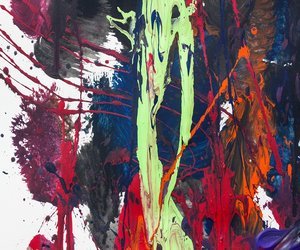Charline Godard Belanger

ART THERAPY: AN ALTERNATIVE AND COMPLEMENTARY APPROACH
TO HELP PEOPLE LIVING WITH PAIN
Mia Hébert, M.A, art therapist and co-founder of Canevas: art therapy center
Gabrielle Gingras, M.A, art therapist and co-founder of Canevas: art therapy center
What is art therapy?
"Art therapy is a therapeutic method that allows self-expression through the use of visual arts such as drawing, painting, sculpture and collage. The act of creating promotes emotional, physical and psychological well-being. In art therapy, it is the expression and meaning of the image that gives meaning to the experience. To express themselves, people use both images and words. Creating an artistic production offers a new possibility of expression that allows one to cross the limits of verbal expression, which often leads to new perspectives and new questions. It is a process that can bring well-being, relaxation and pleasure through the experimentation of materials, and has the advantage of offering people a tangible product to which they can refer at any time." (Blanchet, Gingras, Hébert, & Malo, 2016)
Who is art therapy for?
"Art therapy is for everyone, as creativity is in human nature. Those who wish to engage in a therapeutic creative process, or who would like to begin a personal process of exploration can benefit" (Blanchet et al., 2016).
How does art therapy fit into an alternative approach?
Although art therapy is considered an alternative approach to healing and achieving wellness, much of its development is attributed to the medical model (treatment and diagnosis) and the hospital setting (Vick, 2003).
Art therapy is an alternative approach in that it differs from traditional psychotherapy in its ability to engage human creativity, but more importantly, in its holistic aspect. Indeed, the art-therapeutic process has the particularity of engaging the person in his or her cognitive, emotional and physical globality. The body has a memory of the past: it sometimes houses crystallized emotions, unresolved traumas and various psychological wounds (Van Der Kolk, 2014). This is why the use of the body in therapy is very important. Therefore, art therapy can help people achieve wellness through the act of creating that involves the body (sensations and movements) as well as through the therapeutic goals and support of a trained art therapist.
Many of our clients come for long-standing problems, as it is difficult for them to resolve their difficulties by talking alone. Art therapy offers an additional mode of communication, alternative to verbal expression only, which brings another perspective to the situation. For example, some clients who have been trying to work on managing their emotions for years have had important realizations through the use of art, because making them visible has given them new tools to calm down, to vent, but also to better understand them.
How can art therapy be an effective alternative method to help people with physical pain?
"[...] 90% of the people who consult are experiencing suffering associated with pain with diverse, recurring, and often misunderstood personal symbolism" (Gagliardi, 2012).
Art therapy and various alternative medicine treatments, such as osteopathy, have common philosophies: the human being is a whole, for example. These different types of therapies can act as complementary methods for the treatment of pain. Let's take osteopathy as an example: it uses the body as a gateway and, knowing that the body has a memory, the osteopath is able to detect emotional blockages, for example. In this sense, art therapy, which uses the person's inner world as its gateway, can work through the arts to relieve certain difficult emotions. To echo Gagliardi (2012), every physical suffering has its history and has a psychological and emotional dimension, which makes art therapy a suitable method for this type of work. Art therapy themes such as "represent your physical pain in pictures" can bring important awareness. For example, one person who represented her pain realized that it was rooted in unexpressed sadness.
It is important to mention that the overall goal of art therapy is to promote personal development, facilitate the integration of difficult experiences and achieve a sense of well-being. Art therapy is therefore not a cure for physical suffering, but can help people understand how they can better cope with pain, develop new coping strategies and relieve underlying traumas related to several illnesses such as certain chronic pain or psychosomatic disorders (Angheluta, 2009). In addition, art therapy can improve the overall quality of life of the person with pain by decreasing anxiety and stress and increasing feelings of relaxation (Angheluta, 2009).
References
Angheluta, A. (2009). Art Therapy as an Adjunct Treatment in Chronic Pain Management (Unpublished master's thesis). Alberta, Athabasca university . Retrieved March 02, 2017, from http://dtpr.lib.athabascau.ca/action/download.php?filename=gcap/Amy%20Angheluta%20Project.pdf
Blanchet, M., Gingras, G., Hébert, M., & Malo, M. (2016). Canvas: Art therapy center. Retrieved March 02, 2017, from https://www.centrecanevas.ca/fr/about
Gagliardi, B. (2012, January 24). My approach to osteopathy [My approach to osteopathy]. Retrieved March 3, 2017, from
Van Der Kolk, B. (2014). The body keeps the score. New York, NY: Viking.
Vick, R. M. (2003). A brief history of art therapy. In C. A. Malchiodi (Ed.), Handbook of art therapy (pp. 5-15). New York: Guilford Press.


